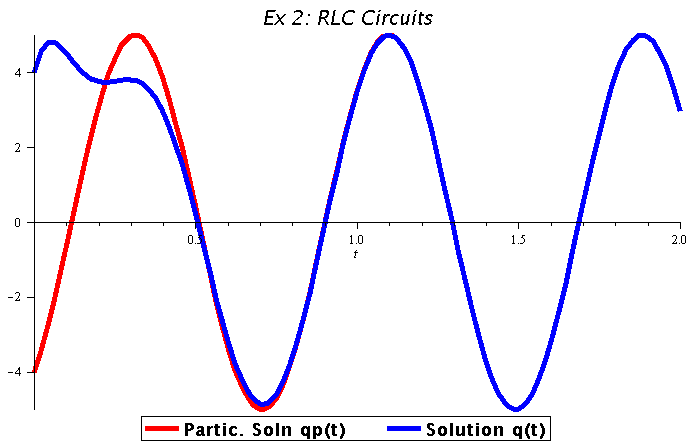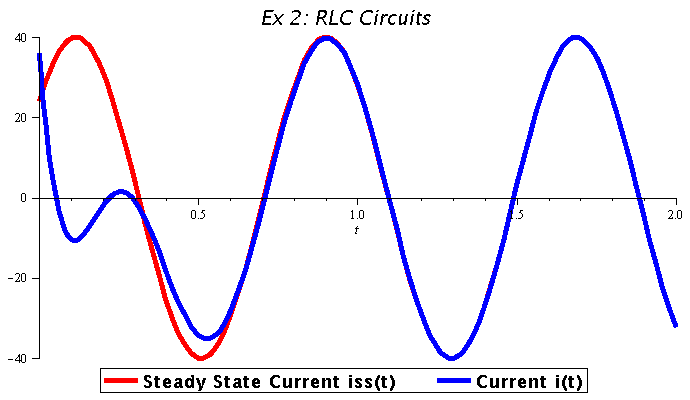Dr. Kevin G. TeBeest
Assoc. Prof. of Applied Mathematics
Kettering University
RLC Example 2:
Solution with Transient and Steady State Terms
| > |
restart; de := 2*diff(q(t),t$2) + 24*diff(q(t),t) + 272*q(t) = 1200*sin(8*t); |
 |
(1) |
Solve the above ODE, subject to initial conditions
q(0) = 4
and q'(0) = 36 . Store the result in Q:
| > |
Q := rhs( dsolve( {de, q(0) = 4, D(q)(0) = 36 }, q(t) ) ); |
 |
(2) |
Simplify the solution, and store the result in
Q:
| > |
Q := combine( Q, trig ); |
 |
(3) |
| > |
qp := -4*cos(8*t) + 3*sin(8*t); |
 |
(4) |
Plot the solution:
| > |
plot( [qp,Q], t=0..2, title=`Ex 2: RLC Circuits`, ytickmarks=5,thickness=5,titlefont=[HELVETICA,BOLD,16],color=[red,blue],legend=["Partic. Soln qp(t) ", "Solution q(t)"],legendstyle=[font=[HELVETICA,BOLD,14]]); |
Current is time
rate of change of charge dQ/dt:
 |
(5) |
Steady State Current:
| > |
iss := 24*cos(8*t) + 32*sin(8*t); |
 |
(6) |
| > |
plot( [iss,i], t=0..2, title=`Ex 2: RLC Circuits`, ytickmarks=5,thickness=5,titlefont=[HELVETICA,BOLD,16],color=[red,blue],legend=["Steady State Current iss(t) ", "Current i(t)"],legendstyle=[font=[HELVETICA,BOLD,14]]); |
The complementary solution qc(t) represents damped
oscillation while the particular solution qp(t) is simple harmonic. In this
case we say the complementary solution is transient and the
particular solution is steady.
So after a sufficient amount of time has passed (about 1/2 second in this
example),
the charge q has reached steady state, and we may
approximate the charge q(t) by the particular solution:
q(t) ~ qp(t) .
Furthermore, after about 1/2 second (in this example),
we may approximate the current i(t) by the steady state current:
i(t) ~ iss(t) .

